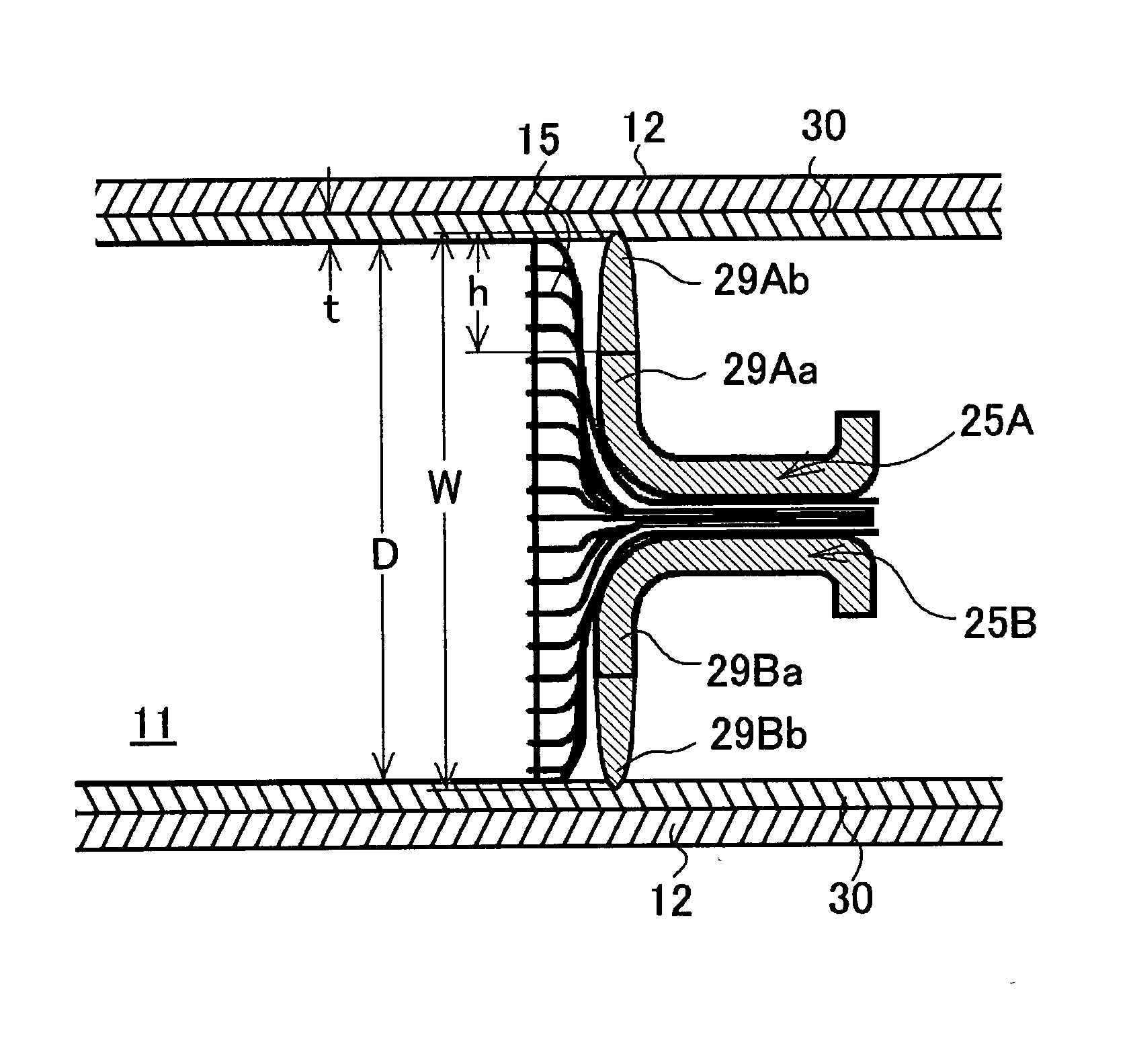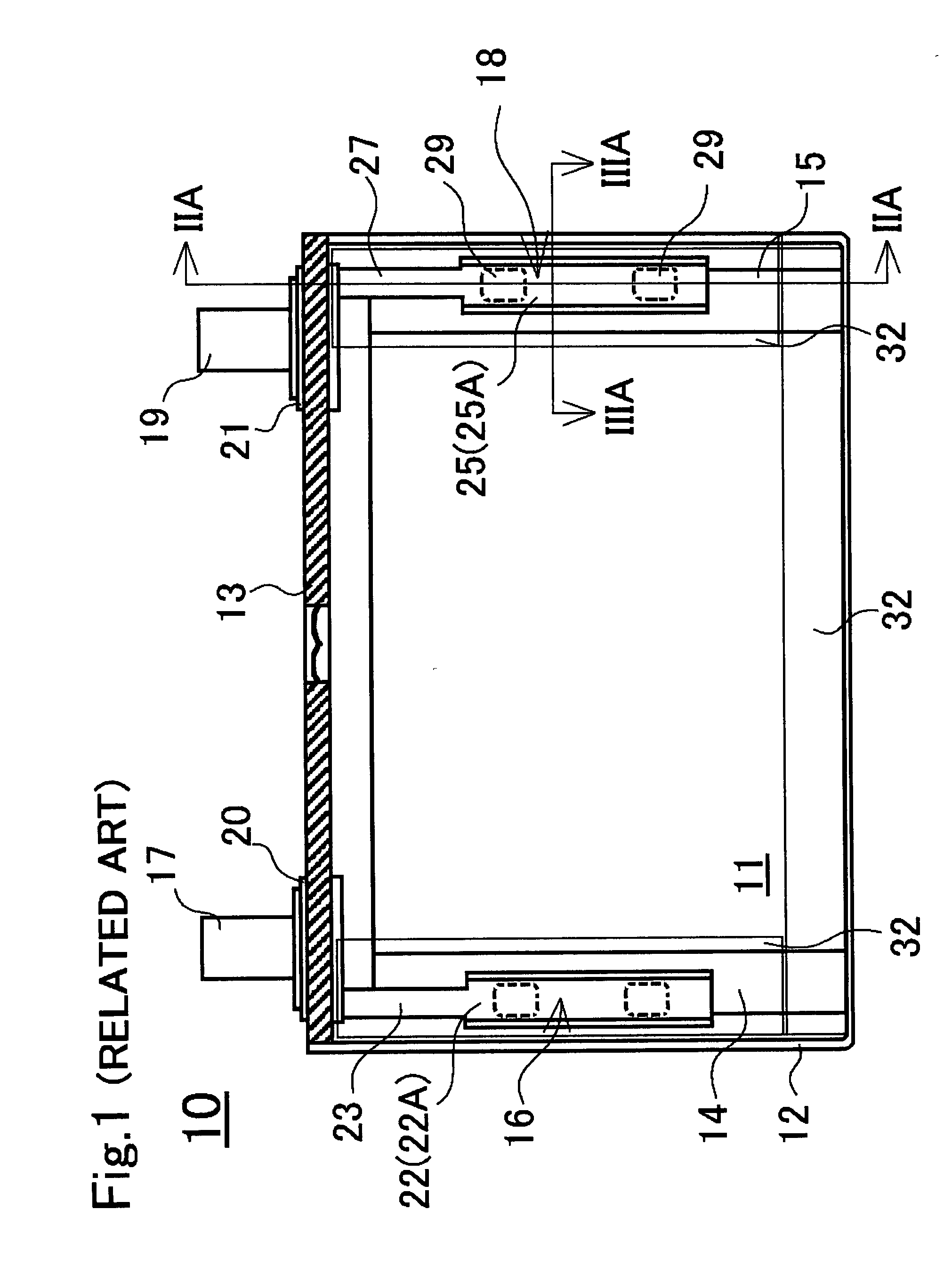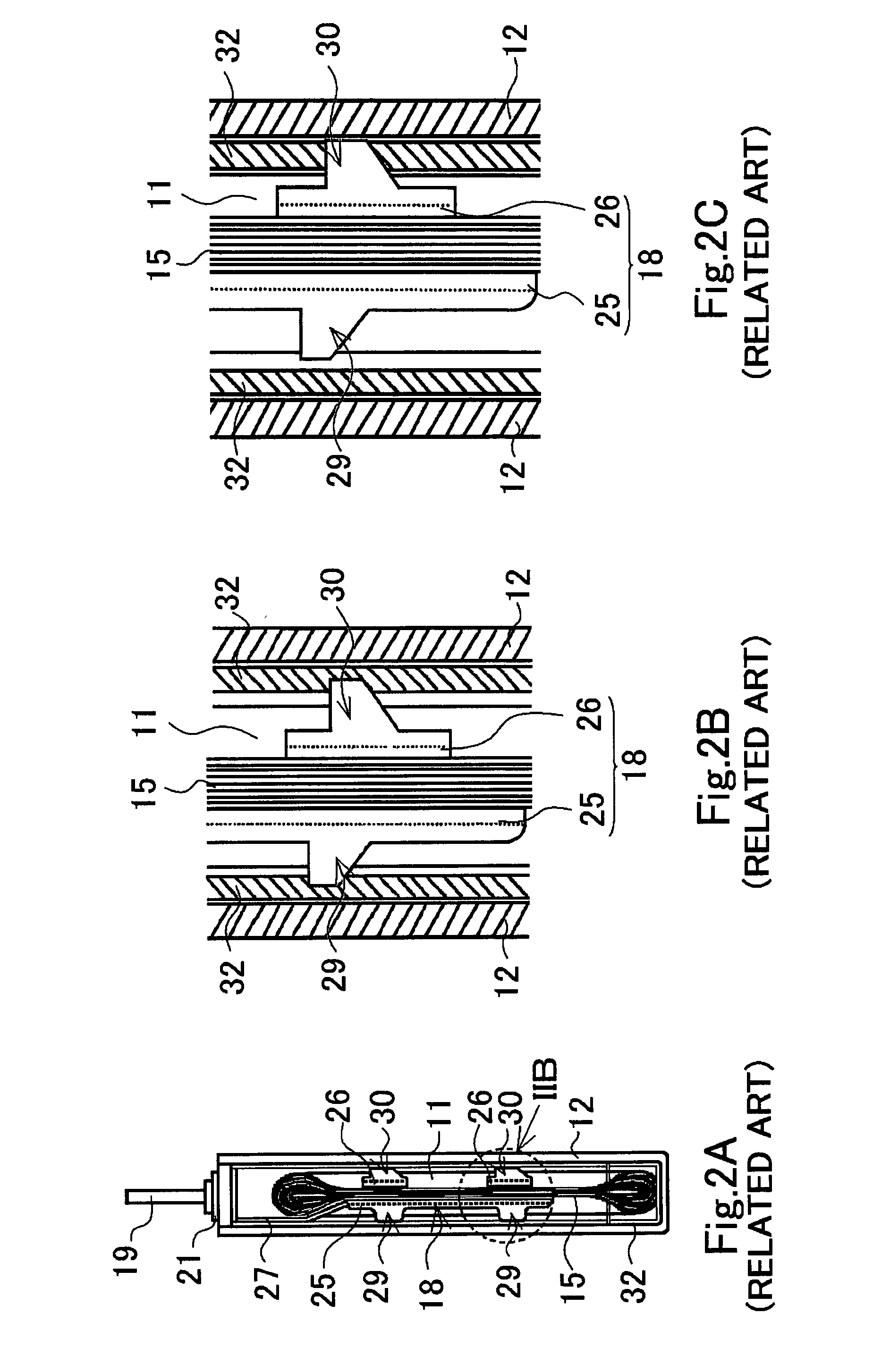Prismatic battery
a technology of prismatic batteries and outer cans, applied in the field of prismatic batteries, can solve the problems of affecting the manufacturing efficiency of prismatic batteries, affecting the volumetric efficiency, and affecting the edge of the battery outer can, and achieve the effect of favorable heat resistance and high strength
- Summary
- Abstract
- Description
- Claims
- Application Information
AI Technical Summary
Benefits of technology
Problems solved by technology
Method used
Image
Examples
first working example
[0060]A structure of a fixing portion of the prismatic battery of the first working example will be explained with reference to FIG. 3A and FIG. 3B. In the prismatic battery of the first working example, since the positive electrode collector member 16 forming the fixing portion on the positive electrode side and the negative electrode collector member 18 forming the fixing portion on the negative electrode side have the same structure, the negative electrode collector member 18 forming the fixing portion on the negative side will be explained in detail, and an explanation of a structure of the positive electrode collector member 16 will be omitted (hereinafter, the same is true for the second working example and the third working example).
[0061]The negative electrode collector member 18 of the prismatic battery of the first working example includes a pair of negative electrode collectors 25A and 25B having a similar shape. Both of the negative electrode collectors 25A and 25B are f...
second working example
[0064]A structure of a fixing portion of the prismatic battery of the second working example will be explained with reference to FIG. 4A and FIG. 4B. The negative electrode collector member 18 of the prismatic battery of the second working example is, like the fixing portion of the first comparative example, composed of the negative electrode collector 25 and the two negative electrode receiving portions 26. On the surface of the negative electrode collector 25, the projection 29 is formed on two locations. On the two negative electrode collector receiving portions 26, the projections 30 are formed, respectively. The projections 29 formed on two locations on the surface of the negative electrode collector 25 includes a first projection 29a on the surface side of the negative electrode collector 25 having a large area, and a second projection 29b formed on the surface of the first projection 29a and having a smaller area than the first projection. Also, the projection 30 formed on th...
third working example
[0068]A structure of a fixing portion of the prismatic battery of the third working example will be explained with reference to FIG. 5A and FIG. 5B. The negative electrode collector member 18 of the prismatic battery of the third working example is the same as that of the prismatic battery of the first working example in the point that both of the negative electrode collectors 25A and 25B are folded and are erect from the negative electrode substrate exposed portion 15 side, and formed with the first projections 29Aa and 29Ba that do not project from the flat electrode assembly 11 towards the battery outer can 12 side, and that the second projections 29Ab and 29Bb are formed on the tip portions of the first projections 29Aa and 29Ba so as the second projections 29Ab and 29Bb project from the flat electrode assembly 11. On the other hand, the structure of the negative electrode collector member 18 of the prismatic battery of the third working example is different from that of the neg...
PUM
 Login to View More
Login to View More Abstract
Description
Claims
Application Information
 Login to View More
Login to View More - R&D
- Intellectual Property
- Life Sciences
- Materials
- Tech Scout
- Unparalleled Data Quality
- Higher Quality Content
- 60% Fewer Hallucinations
Browse by: Latest US Patents, China's latest patents, Technical Efficacy Thesaurus, Application Domain, Technology Topic, Popular Technical Reports.
© 2025 PatSnap. All rights reserved.Legal|Privacy policy|Modern Slavery Act Transparency Statement|Sitemap|About US| Contact US: help@patsnap.com



